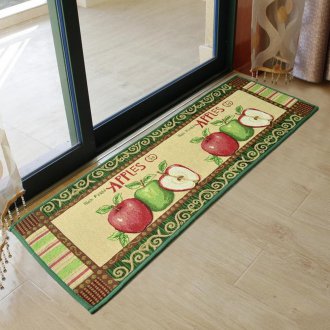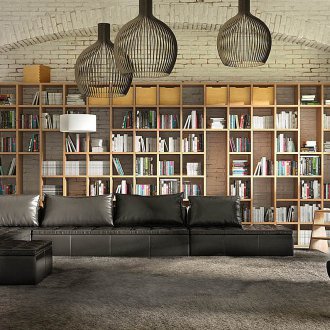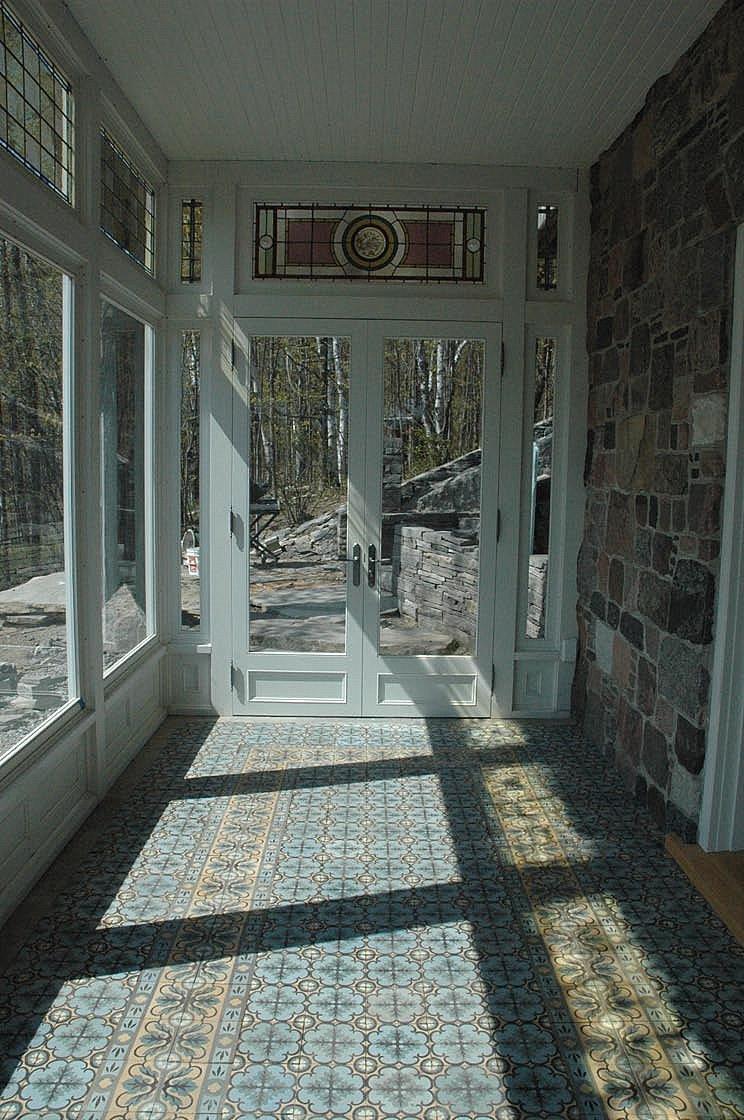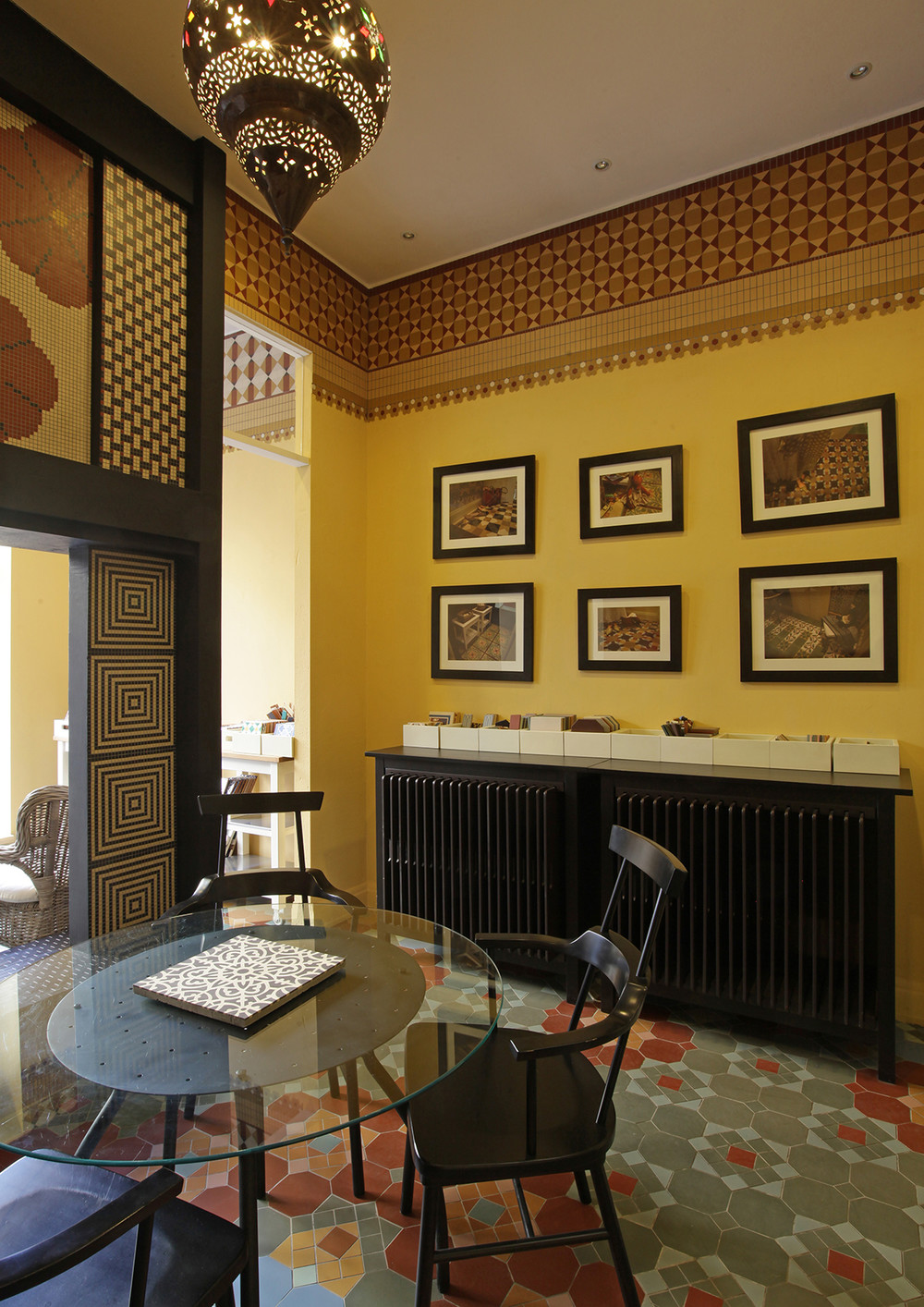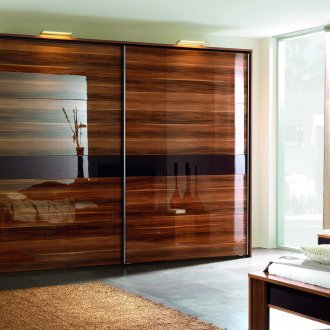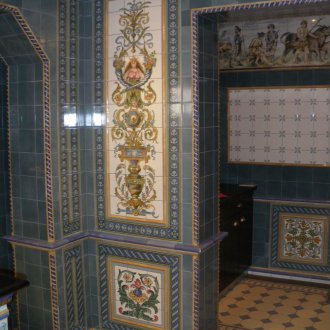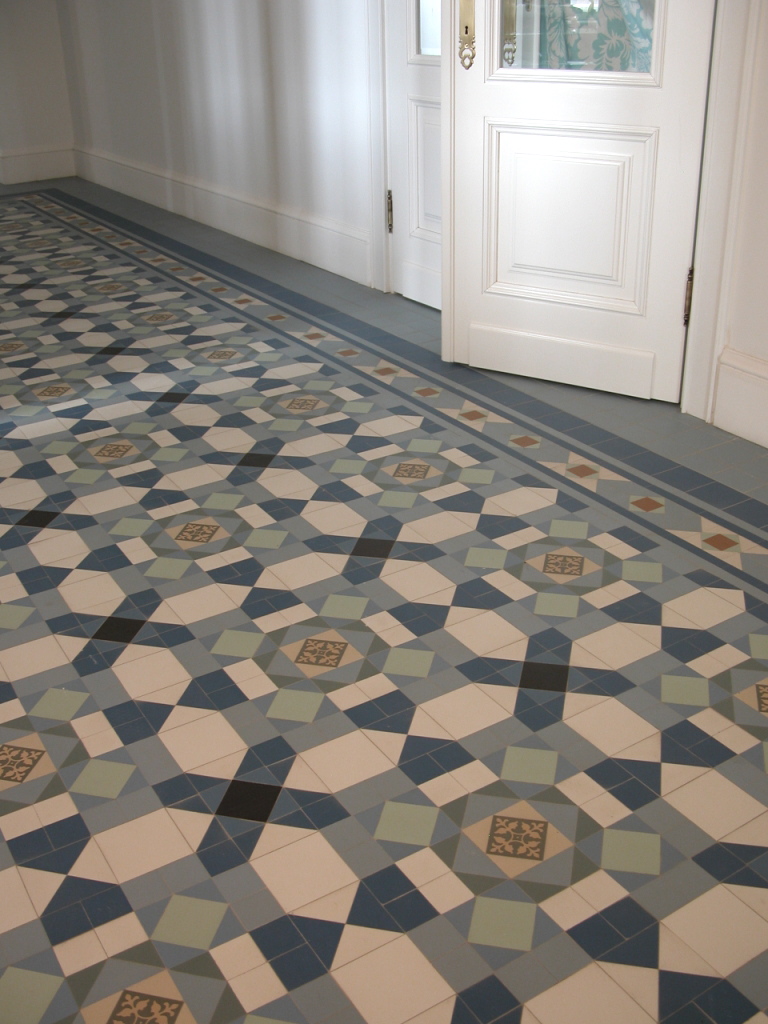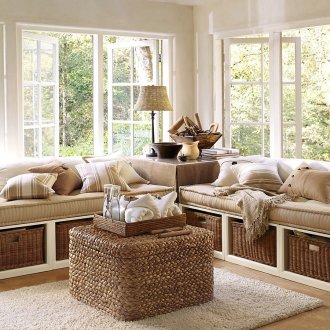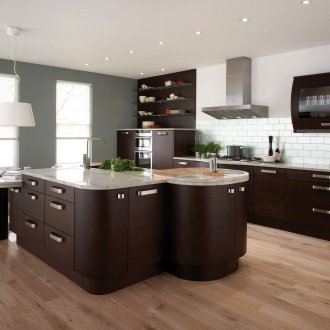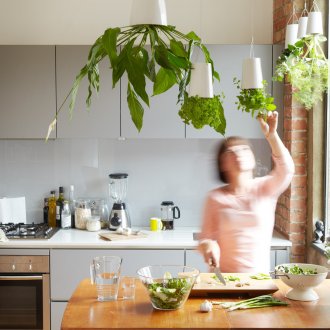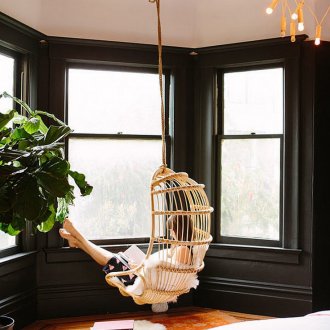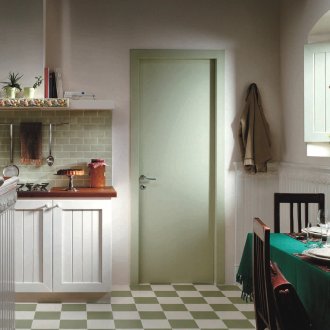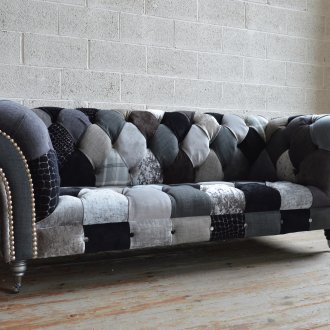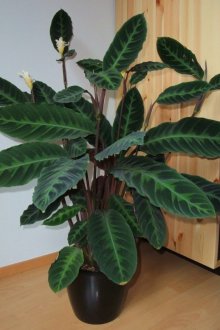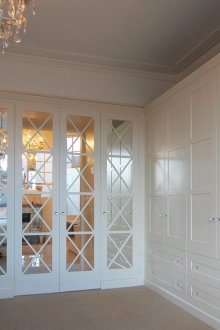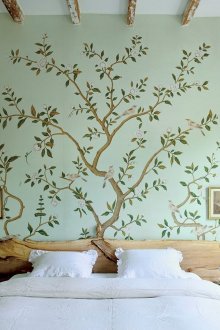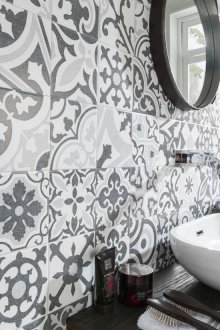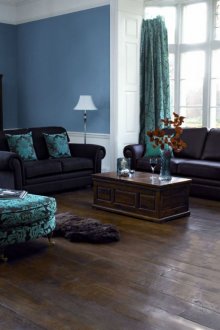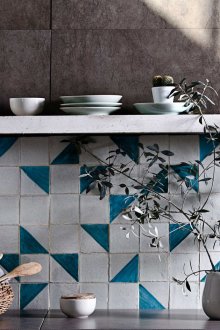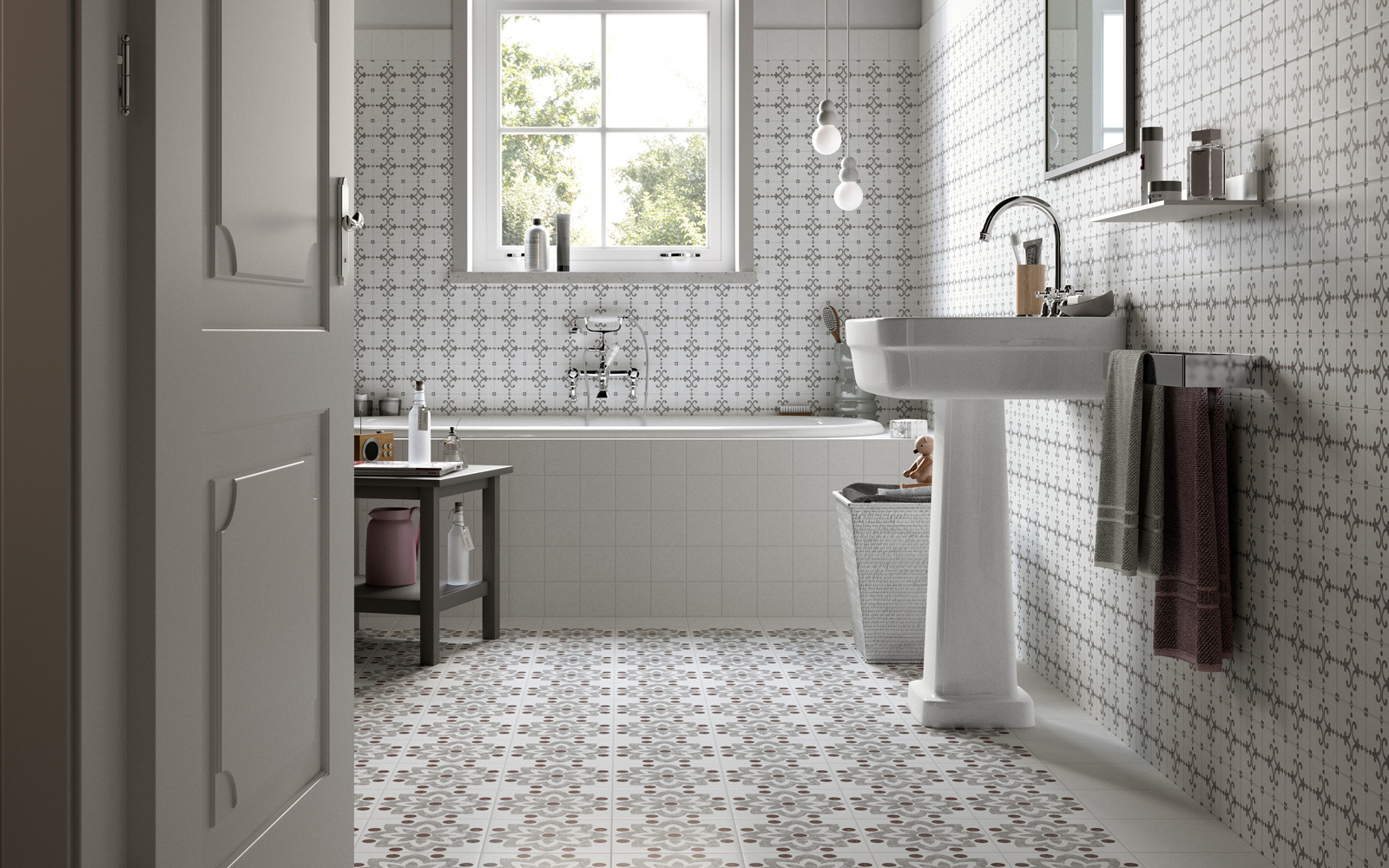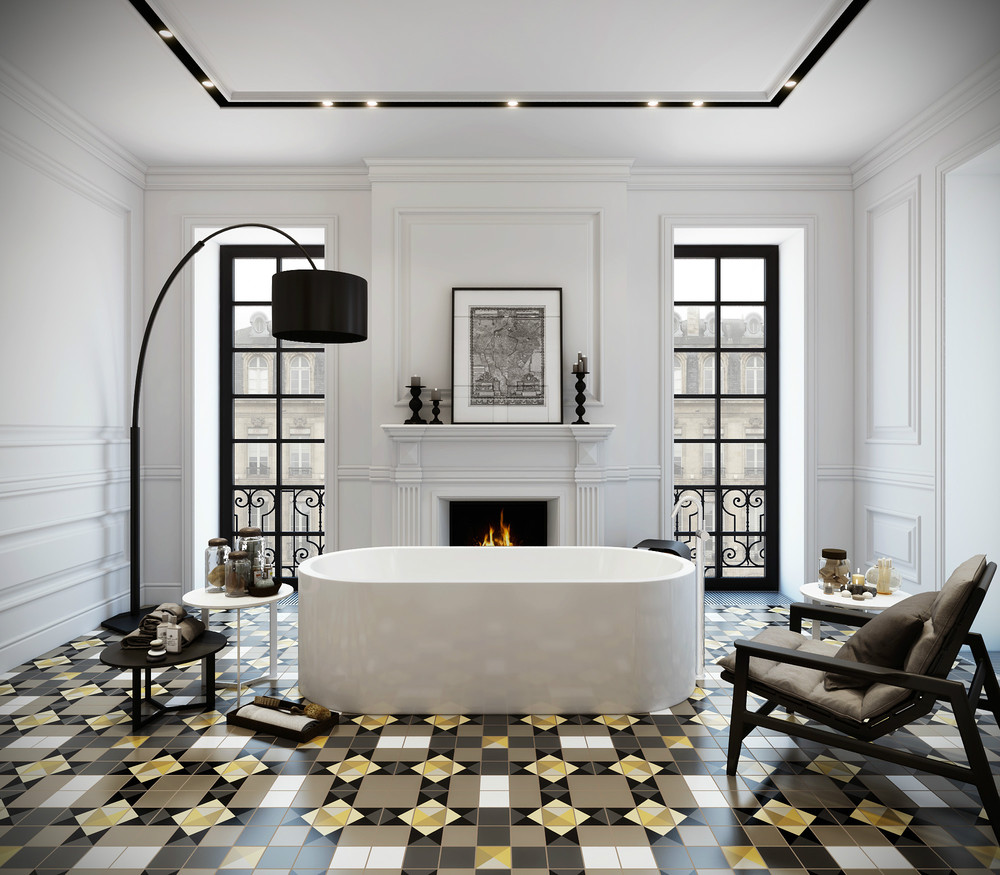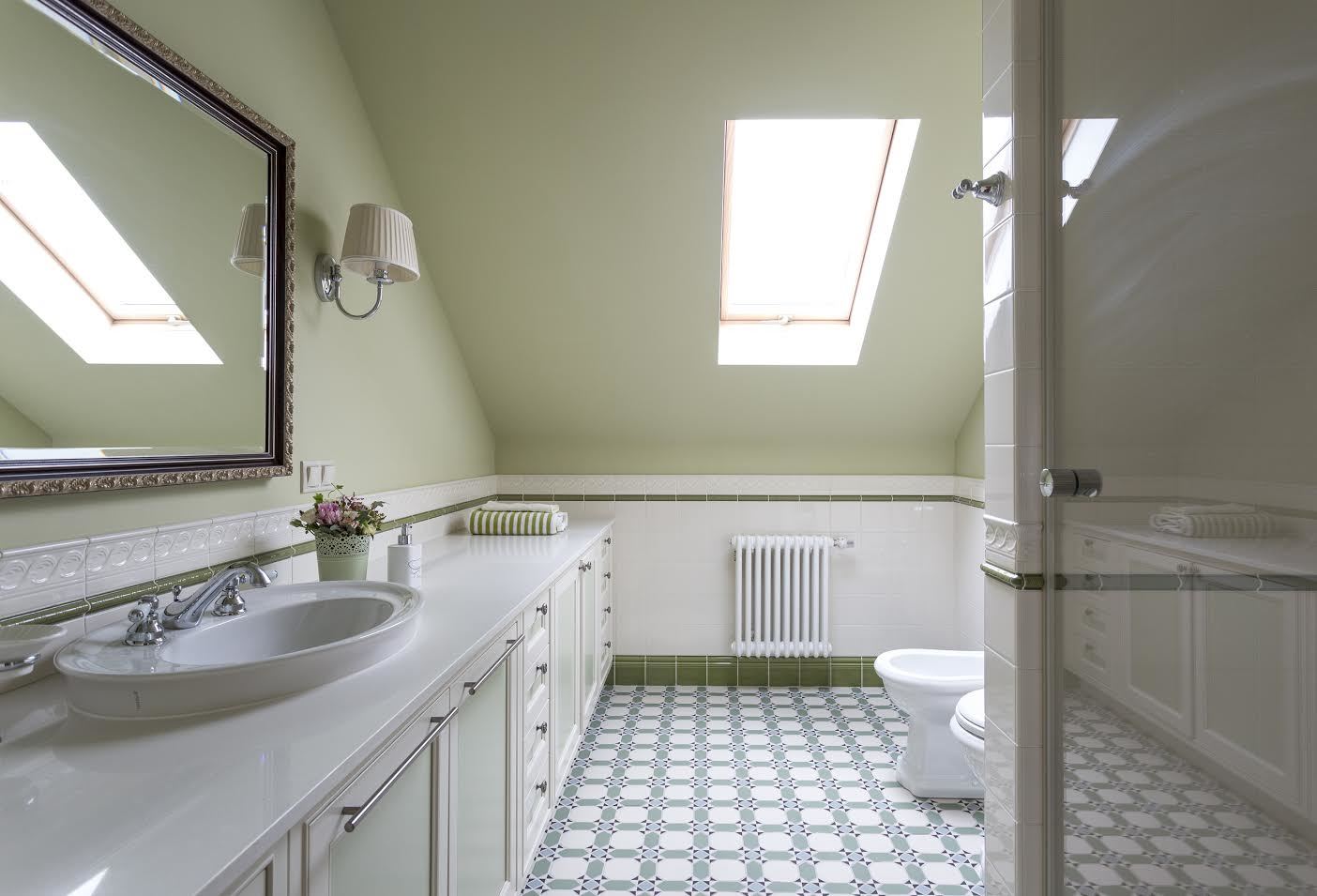Metlakh tile: the perfection of the pattern (24 photos)
Content
In the Middle Ages in the German city of Metlach, the production of ceramic tiles of special strength was established. It was made from refractory clay by roasting at very high temperatures. The raw material in its composition was similar to that used in the manufacture of porcelain. The use of pigments made it possible to produce products of various colors.
The traditions of production have been preserved for centuries, and Metlakh tiles reached the greatest popularity by the end of the 19th century. Then, with the development of factories and factories, large volumes of durable flooring were required - the products of their city Metlakh fully met the requirements.
In our country, metlakh floor tiles were very popular in the second half of the twentieth century. It was used in the construction of public buildings, used in the construction of multi-storey residential buildings. The finishing material was used to clad the plinths of buildings. Such a wide distribution is explained by the fact that by its properties small-format metlakh tiles are very close to modern porcelain tiles.
Features of Metlakh tiles
The use of refractory clay in the production process and high-temperature firing at a temperature of about 1200 degrees provided the material with the following properties:
- high strength;
- frost resistance;
- resistance to sudden changes in temperature;
- resistance to aggressive chemicals;
- acid resistance;
- water resistance.
The pigments used to paint the top layer of the tile are sintered with the bulk of the material during firing, due to which the surface does not fade, does not wipe, and does not lend itself to mechanical stress.
The increased hardness, reliability and durability of this type of ceramic is combined with an affordable price. This makes Metlach tile a popular solution for a budget-less construction.
Where is metlakh tile used?
The practicality of metlakh tiles has become the reason for its use in chemical laboratories. This is one of the few materials that can be used to finish floors and walls, surfaces of laboratory tables. Resistance to aggressive substances has made Metlach tiles the best choice as a floor covering for garages. It easily copes with loads, it is not difficult to remove engine oil stains from its surface. In addition, metlakh tiles are used in the interior:
- Bathrooms
- kitchens;
- open terraces;
- pools;
- hallways.
Lay tiles on the staircases, facing the entrance groups and the basement of buildings, fences. The collections of modern manufacturers are so diverse in their sizes, colors and shapes that they allow the use of metlach floor tiles in the most respectable houses when creating exclusive interiors.
The current state of production of metlakh tiles
Unfortunately, ceramic tiles subdued the consumer with their diversity and forced out products from the city of Metlach from the market. Today, according to traditional technology, metlakh tiles are produced by only a few factories, the sales leader belongs to the French, who were able to timely reorient and organize the production of products demanded by customers around the world.
The assortment of the collection includes tile formats of 5x15, 15x15 and 20x20 cm, complemented by square, hexagonal, octagonal and triangular elements of different sizes. Patterns, borders, panels, mosaics are produced - all this allows you to create luxurious "carpets" from metlakh tiles on the floor.
It was along the path of creating ceramic carpets that the French masters went. They offer off-the-shelf tile sets with a complex pattern in a wide range of colors. Such coverage is worthy of the most respectable mansions and offices. The price per square meter of such a carpet from Metlakh tiles can reach 500 euros, this is really an exclusive coating with a unique color.
The manufacturer suggests using layouts that facilitate the creation of complex flooring. Thanks to this, skilled craftsmen quickly and accurately lay out “carpets” made of ceramics.
Choose a metlah tile
One of the features of metlakh tiles is the presence of its division into classes. The following products are available:
- Grade 1 - designed for indoor spaces that do not border the street. Such tiles can be laid in the kitchen and in the bathroom;
- Grade 2 - for rooms with medium traffic, including those that border the street. Use in hospital wards, preschools;
- Grade 3 - wear-resistant tiles designed for corridors, open and closed terraces, public kitchens;
- Grade 4 - used in rooms with high traffic, including in public and commercial buildings. Can be used as flooring in garages.
Such a classification greatly facilitates the choice of customers and gives guarantees of high quality of the tiles used.
Laying Metlakh tiles
The classic technology for installing floor tiles is used. One of the main indicators of high quality coating is the proper preparation of the substrate. It must be durable, clean and even. Ideal geometry is of particular importance when working with a large number of additional elements. Large metlakh tiles in the bathroom can hide some floor flaws, but in large open areas you need to try to prepare the foundation.
Metlakh tiles are laid after preliminary layout, which allows you to verify the correctly selected color scheme of additional elements. Only those adhesives that are designed to work with this tile are used. As the main working tool, you should choose a spatula with a distance between the teeth from 3 to 7 mm. When combining tiles of different formats, it is recommended to start laying with ceramics having large dimensions. Clearances may be minimal, but it is still recommended that they be made. The last stage is grouting, for it it is worth choosing a composition that does not differ in color from the base tile.
For a long time, stairwells of high-rise buildings were associated with metlah tiles. Today, this practical material is represented by many collections that are worthy of exclusive interiors. Metlakh tile is still characterized by excellent technical characteristics, which makes the scope of its application unlimited.
